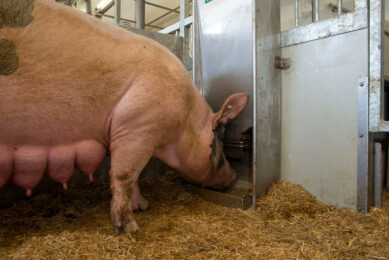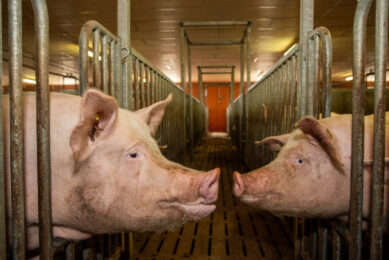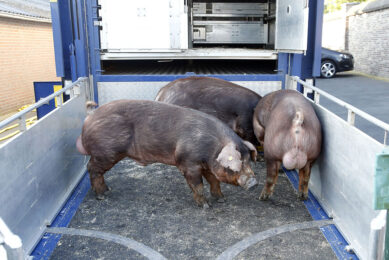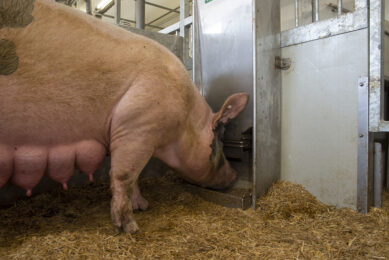Gait analysis to detect sow lameness
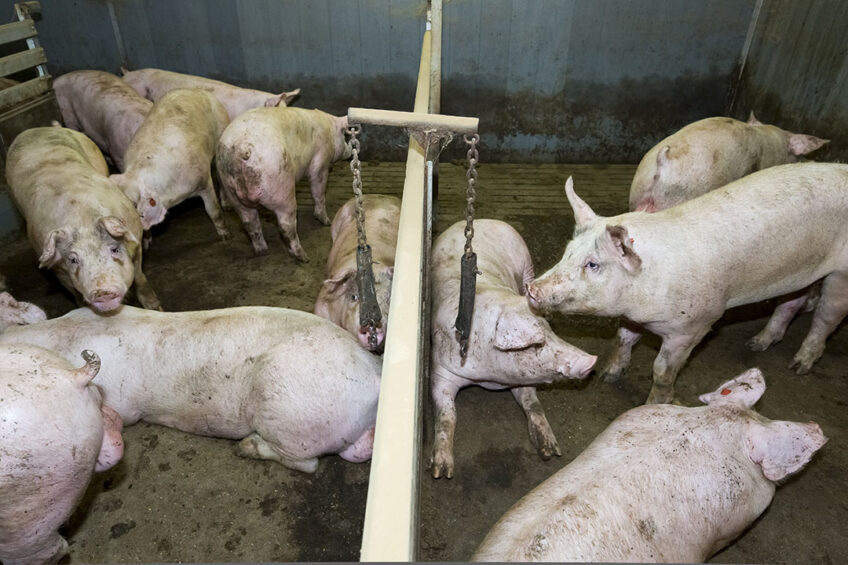
Lameness, a significant health and welfare concern in sow production systems, causes extensive financial losses in the swine industry. It is estimated that up to 48% of sows in a given farm are lame. Early and accurate lameness detection and treatment is critical to prevent economic losses and welfare issues.
Lameness can be evaluated using visual lameness score which is an easy to use and cheap to implement subjective method. However, visual scoring requires substantial training, it is time and labor involved, and prone to observer error due to human visual perception limitations. Objective measurement such as gait analysis is a uniform, sensitive, and definitive method to detect sow lameness. Gait analysis obtains quantitative measures of changes in gait quality and enables swine farmer to track the impacts of preventive treatments over an extended period of time.
Lameness in sows
Lameness is a multifactorial condition affecting pig welfare and profitability. The definition of lameness is that it is a deviation from the normal gait pattern due to compensatory movements to avoid any pain or discomfort. Lameness is caused by lesions, diseases, and other factors such as genetics, nutrition, housing systems and management practices. Lameness is regarded as a poor welfare indicator because of its association with pain and discomfort. It also leads to reduced mobility, and reduced ability to cope with the environment. Direct lameness costs include increased workload, medical treatment, reduced (re)productive performance, increased culling rate, and increased production costs. It is estimated that lameness costs approximately US$ 230 million/year to the US swine industry.
Visual lameness score
There are several swine lameness score systems such as standing lameness score, locomotion lameness score, Feet First locomotion score, Dewey and colleagues’ lameness score (1993), and Main and colleagues’ lameness score (2000). Visual lameness scoring systems in swine considers various parameter such as locomotion speed, indications of asymmetry such as step length, head and loin movements, willingness to walk, feet contact with the floor analysis of postural time budgets.
What is gait analysis?
Gait analysis is an objective method to accurately assess gait deviation. In this method, different measurements of time and motion are recorded by higher definition cameras that capture higher frames per second to recognize lame and sound sows. Gait analysis parameters detect sows with gait abnormalities and issues before they visibly impair the sow.
Lame vs sound sow gait characteristics
Walking is a four-beat gait with alternating 2- and 3-limb support phases. Sound sows have a steady pattern of the two and three limb support phases during their walking stride duration. In sows, the center of body mass is located around their shoulder area. They carry 54% of their weight on their forelimbs. Due to the higher weight load on the forelimbs most locomotion problems occur in fore rather than rear legs. Changes in gait characteristics can help recognize the region of the limb in which the lameness is located or define whether the lameness cause is in the foot or the upper limb. In lame sows, there is a tendency of shorter stride lengths, lower velocity, and longer stance times than sound sows. In addition, there are variations in stride pattern due to pain in sows with poor limb structure.
What variables are used for lameness detection?
The most applied methods of gait analysis include kinematics and kinetics. Kinematics measures the movement geometry and calculates different gait aspects such as stride length. It also measures stance and swing duration and the forces causing the displacement or movement by measuring ground reaction forces with a force plate. Kinematic and kinetic analysis combined with behavioral change detection are used to develop a fully automated and continuous lameness detection system. Behavioral change parameters indicating lameness include uneven weight distribution among the legs, greater weight shifting among legs while standing, increased lying times and bouts, reduced walking speed, and changes in feeding behaviour and activity.
Concluding remarks
Gait analysis programmes are reliable tools to detect discrepancies in gait characteristics between sound and lame sows. Quantitative gait analysis is promising for early lameness diagnosis due to sensitive measurements that are undetectable to the naked eye. However, further captured data is needed to standardise animal tracking to have a robust system for farm environment.



